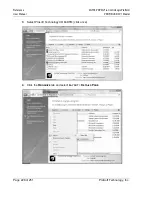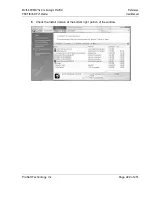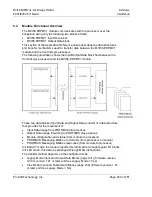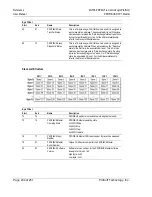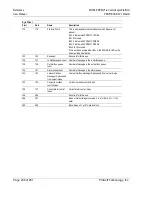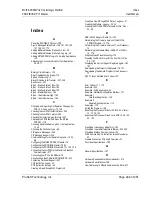
MVI56-PDPMV1 ♦ ControlLogix Platform
Reference
PROFIBUS DPV1 Master
User Manual
Page 241 of 251
ProSoft Technology, Inc.
MSG Status Data Details
The ControlLogix processor may periodically send a MSG request to retrieve the
status data from the MVI56-PDPMV1 module.
The types of data returned in the PROFIBUS Input Status area include:
Module configuration data values
MVI56 software revision level
Key PROFIBUS configuration values
PROFIBUS Master hardware/software revision level
MVI56 module statistics
Mailbox messaging control and status.
You can find the contents of the Status Data block in the
MVI56PDPMV1.Status
user controller tag structure in RSLogix. These tags reference the
PDPMV1_Status user-defined data type.
The following table shows the data structure of the GetStatus mailbox response.
Byte Offset
Start
End
Name
Description
0
9
Module ID string
Unique module 10-byte pattern as text "MVI5PDPMV1"
10
11
Reserved
Reserved for future use
12
13
PROFIBUS Input Data size
The number of words of PROFIBUS input data to transfer from
the PROFIBUS Master to the processor within the Input Data
blocks. Value is selected during user configuration
14
15
PROFIBUS Output Data size
The number of words to transfer from the processor in the
PROFIBUS output space during the output data transfer. Value
is selected during user configuration
16
17
Reserved
Reserved for future use
18
19
Reserved
Reserved for future use
20
21
Reserved
Reserved for future use
22
22
Input Data Byte Swap
User-configured flag to indicate if input data is swapped before
being placed in the input image for the controller.
0=No swapping
Not 0=Swap bytes
23
23
Output Data Byte Swap
User-configured flag to indicate if output data is swapped after
being received from the output image of the controller.
0=No swapping
Not 0=Swap bytes
24
24
Module software major version
number.
MVI56 module application software version number
Bits
16
8
7
0
High Byte
Low Byte
25
25
Module software minor version
number
26
41
PROFIBUS Slave Configured List
This is a 16-byte array with bit fields where one bit is assigned to
each slave station address. The associate bit is set if the slave
is present in the database. For the bit/slave relationship, refer to
the Slave List Structure below.


